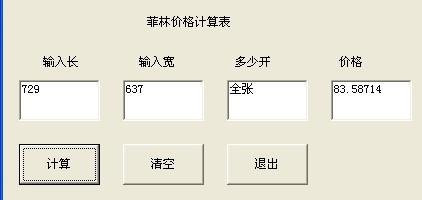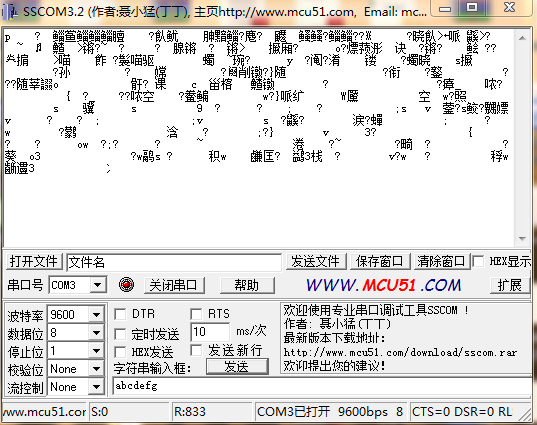当前位置:编程学习 > VB >>
答案:| 〖ALT键﹢鼠标右键开始╱暂停;鼠标左键控制速度〗 启动自动滚屏功能 |
| 利用子类处理技术限制窗体的大小 |
| ' * * * * * * * * * * 警告 * * * * * * * * * * * * * ' 对以下代码进行修改将有可能导致不可预料的后果,甚至能使您的VB崩溃! ' 在VB IDE环境中运行本程序之前请先保存您的修改 ' 不要使用断点调试模式,这将导致VB崩溃! ' * * * * * * * * * * 注意 * * * * * * * * * * * * * 模块: Option Explicit Public OldWindowProc As Long Declare Function GetWindowLong Lib "user32" Alias "GetWindowLongA" (ByVal hwnd As Long, ByVal nIndex As Long) As Long '从指定的窗口结构中取得信息 '参数/类型 说明 'hwnd(long): 欲为其获取信息的窗口的句柄 'nIndex(long): 欲取回的信息,可以是下述任何一个常数 'GWL_EXSTYLE:扩展窗口样式 'GWL_STYLE:窗口样式 'GWL_WNDPROC:该窗口的窗口函数的地址 'GWL_HINSTANCE:拥有窗口的实例的句柄 'GWL_HWNDPARENT:该窗口之父的句柄.不要用 SetWindowWord 来改变这个值 'GWL_ID:对话框中一个子窗口的标识符 'GWL_USERDATA:含义由应用程序规定 '对话框亦可指定下列常数 'DWL_DLGPROC:这个窗口的对话框函数地址 'DWL_MSGRESULT:在对话框函数中处理的一条消息返回的值 'DWL_USER:含义由应用程序规定 Declare Function SetWindowLong Lib "user32" Alias "SetWindowLongA" (ByVal hwnd As Long, ByVal nIndex As Long, ByVal dwNewLong As Long) As Long '在窗体结构中为指定的窗口设置信息 '参数/类型 说明 'hwnd(long) 欲为其获取信息的窗口的句柄 'nIndex(long) 参考GetWindowLong函数 'dwNewLong(long) 由nIndex指定的窗口信息的新值 Declare Sub CopyMemory Lib "kernel32" Alias "RtlMoveMemory" (pDest As Any, pSource As Any, ByVal ByteLen As Long) '这就是在VisualBasic中处理指针的"短柄斧"--CopyMemory.你可能在API文档中找不到它,但它确实存在,并且功能异常强大 '参数/类型 说明 'pDest 你想写入字节到其中的任何变量的ByRef参数(地址) 'pSource 要从其中进行复制的ByRef变量 'ByteLen 要复制的字节数 Declare Function CallWindowProc Lib "user32" Alias "CallWindowProcA" (ByVal lpPrevWndFunc As Long, ByVal hwnd As Long, ByVal Msg As Long, ByVal wParam As Long, ByVal lParam As Long) As Long '把控制权传回给原来的窗口过程 Public Const WM_GETMINMAXINFO = &H24 Type POINTAPI x As Long y As Long End Type ' This is the structure that is passed by reference(ByRef)(ie an address) to your message handler(消息侦听器) ' The key items in this structure are ptMinTrackSize and ptMaxTrackSize Type MINMAXINFO ptReserved As POINTAPI ptMaxSize As POINTAPI ptMaxPosition As POINTAPI ptMinTrackSize As POINTAPI ptMaxTrackSize As POINTAPI End Type Public Function SubClass1_WndMessage(ByVal hwnd As Long, ByVal Msg As Long, ByVal wp As Long, ByVal lp As Long) As Long ' Watch for the pertinent message to come in If Msg = WM_GETMINMAXINFO Then Dim MinMax As MINMAXINFO ' This is necessary because the structure was passed by its address and there ' is currently no intrinsic way to use an address in Visual Basic CopyMemory MinMax, ByVal lp, Len(MinMax) ' This is where you set the values of the MinX,MinY,MaxX, and MaxY ' The values placed in the structure must be in pixels. The values ' normally used in Visual Basic are in twips. The conversion is as follows: ' pixels = twips\twipsperpixel MinMax.ptMinTrackSize.x = 3975 \ Screen.TwipsPerPixelX MinMax.ptMinTrackSize.y = 1740 \ Screen.TwipsPerPixelY MinMax.ptMaxTrackSize.x = Screen.Width \ Screen.TwipsPerPixelX \ 2 MinMax.ptMaxTrackSize.y = 3480 \ Screen.TwipsPerPixelY ' Here we copy the datastructure back up to the address passed in the parameters ' because Windows will look there for the information. CopyMemory ByVal lp, MinMax, Len(MinMax) ' This message tells Windows that the message was handled successfully SubClass1_WndMessage = 1 Exit Function End If ' Here, we forward all irrelevant messages on to the default message handler. SubClass1_WndMessage = CallWindowProc(OldWindowProc, hwnd, Msg, wp, lp) End Function 窗体代码: Option Explicit Private Const GWL_WNDPROC = (-4) Private Sub Form_Load() ' First, we need to store the address of the existing Message Handler OldWindowProc = GetWindowLong(Me.hwnd, GWL_WNDPROC) ' Now we can tell windows to forward all messages to out own Message Handler Call SetWindowLong(Me.hwnd, GWL_WNDPROC, AddressOf SubClass1_WndMessage) End Sub Private Sub Form_Unload(Cancel As Integer) ' We must return control of the messages back to windows before the program exits Call SetWindowLong(Me.hwnd, GWL_WNDPROC, OldWindowProc) End Sub |
上一个:强制和防止窗口重画
下一个:SQLite研究——自定义函数
- 更多VB疑问解答:
- vb把图片转换成 base64代码
- 批处理转移文 之errorlevel
- vb 6.0 调用vb.net dll混合程序集错误
- VB inet控件访问ftp 本机测试通过客户机inet控件使用失败。急!!
- 求助在Dir1控件当前目录下新建一个文件夹的代码
- CreateObject创建Word Excel对象失败,提示,无法加载DLL,怎么解决?
- 有两个磁盘阵列,如何使用能达到最好的效果
- cloudStack 如何实现 vSphere的DRS功能
- 和难缠客户的那些事儿
- 批处理转移文 之errorlevel
- vb 6.0 调用vb.net dll混合程序集错误
- VB inet控件访问ftp 本机测试通过客户机inet控件使用失败。急!!
- 求助在Dir1控件当前目录下新建一个文件夹的代码
- CreateObject创建Word Excel对象失败,提示,无法加载DLL,怎么解决?
- 有两个磁盘阵列,如何使用能达到最好的效果





